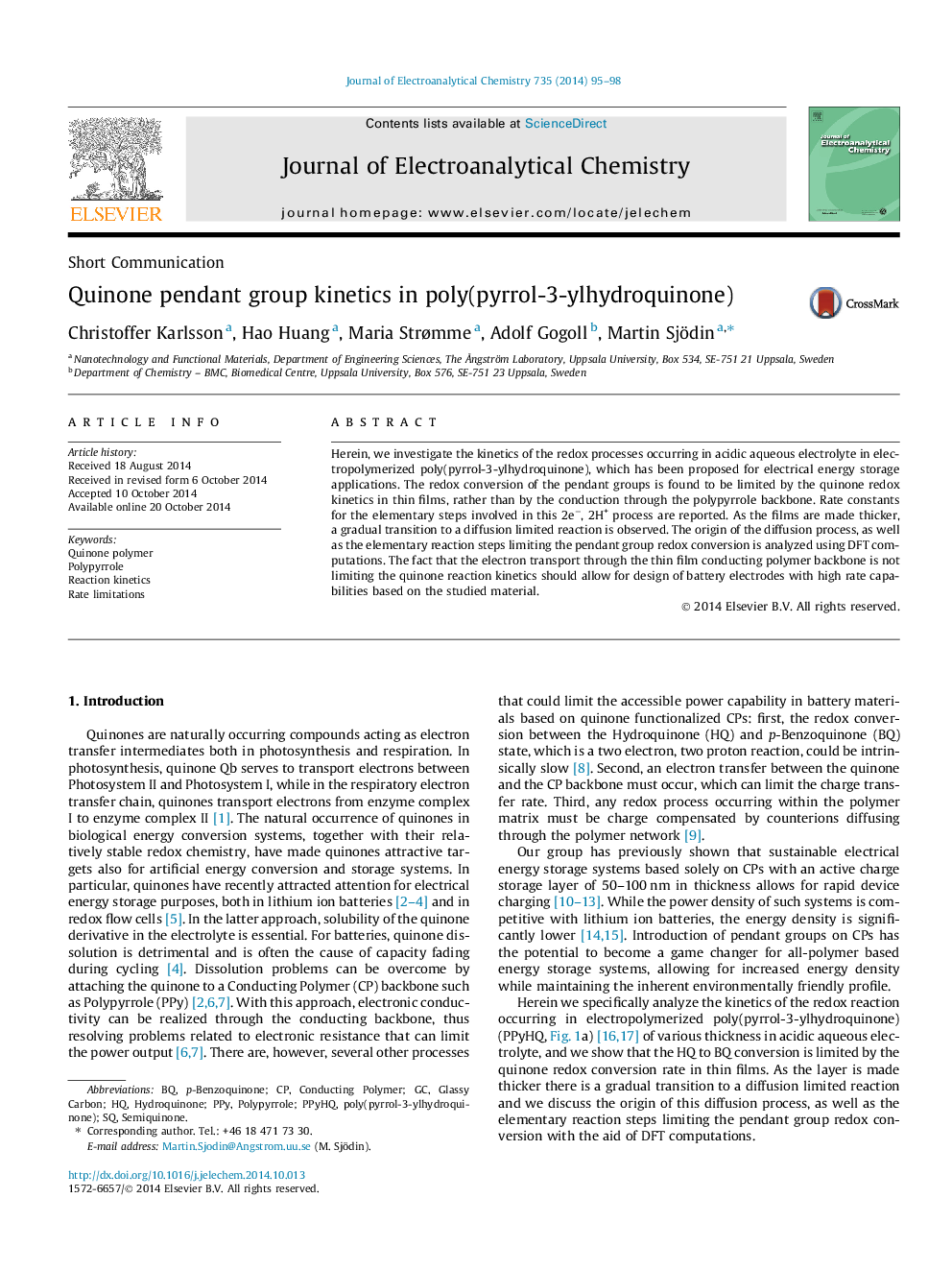| Article ID | Journal | Published Year | Pages | File Type |
|---|---|---|---|---|
| 218620 | Journal of Electroanalytical Chemistry | 2014 | 4 Pages |
•The rate limitations of hydroquinone functionalized polypyrrole were studied.•In thin films the backbone conduction did not limit the pending group redox cycling.•Rate constants for the 2e−, 2H+ pending group redox conversion were extracted.•A transition to counter ion diffusion limitation was observed for thicker films.
Herein, we investigate the kinetics of the redox processes occurring in acidic aqueous electrolyte in electropolymerized poly(pyrrol-3-ylhydroquinone), which has been proposed for electrical energy storage applications. The redox conversion of the pendant groups is found to be limited by the quinone redox kinetics in thin films, rather than by the conduction through the polypyrrole backbone. Rate constants for the elementary steps involved in this 2e−, 2H+ process are reported. As the films are made thicker, a gradual transition to a diffusion limited reaction is observed. The origin of the diffusion process, as well as the elementary reaction steps limiting the pendant group redox conversion is analyzed using DFT computations. The fact that the electron transport through the thin film conducting polymer backbone is not limiting the quinone reaction kinetics should allow for design of battery electrodes with high rate capabilities based on the studied material.
Graphical abstractFigure optionsDownload full-size imageDownload as PowerPoint slide
